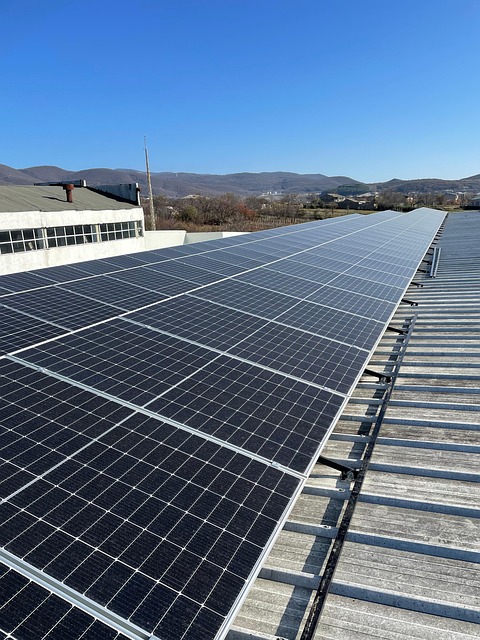Drone surveillance systems offer a game-changing solution for large-area security, providing comprehensive coverage and real-time data using UAVs with high-res cameras. Benefits include accessibility to remote areas, cost-effective installation compared to traditional systems, and advanced threat analysis via AI object detection. However, successful deployment requires meticulous planning, including strategic camera placement, permission acquisition, integration with existing infrastructure, and handling privacy concerns through strict data protocols.
“Drone-based video surveillance is transforming large-area monitoring, offering unprecedented aerial insights. This article delves into the potential of this innovative technology for comprehensive security solutions. We explore how drones enhance surveillance capabilities, covering vast regions efficiently. From benefits like real-time data and reduced costs to challenges in installation and best practices for optimal results, this guide offers valuable insights for those considering drone surveillance system installation.”
Understanding Drone Surveillance for Large Areas
Drone-based video surveillance offers a revolutionary approach to monitoring vast areas, providing a comprehensive and efficient solution for security professionals. By utilizing unmanned aerial vehicles (UAVs) equipped with high-resolution cameras and advanced sensors, this technology enables detailed observation of extensive landscapes previously challenging for traditional surveillance systems.
The installation of drone surveillance systems involves strategic planning to ensure optimal coverage. These drones can swiftly traverse large territories, capturing high-quality footage from elevated perspectives, which aids in identifying potential threats or anomalies. This method is particularly beneficial for securing remote locations, borders, or expansive urban areas where human observation alone would be inadequate.
Benefits of Drone-Based Video Monitoring Systems
Drone-based video surveillance offers a revolutionary approach to large-area monitoring, providing numerous benefits over traditional systems. By utilizing unmanned aerial vehicles (UAVs) equipped with high-resolution cameras and advanced sensors, this technology delivers a comprehensive and dynamic perspective of vast landscapes. One of its key advantages is the ability to cover extensive territories with ease, making it ideal for border control, environmental monitoring, or large-scale event security.
The flexibility and accessibility of drone surveillance systems are significant. They can reach remote or challenging areas, offering a safer and more efficient alternative to ground-based installation. Furthermore, real-time data transmission allows for swift response times, enhancing overall security. This technology’s precision and detail provide a powerful tool for analyzing potential threats, making it an increasingly popular choice for those seeking advanced surveillance solutions, particularly with the integration of AI for object detection and recognition.
Challenges and Considerations in Installation Process
The installation process of drone-based video surveillance systems for large areas presents several unique challenges. One of the primary considerations is ensuring optimal camera placement to cover every corner of the targeted zone effectively. This involves careful planning and mapping to account for potential obstacles like trees, buildings, or terrain undulations that might block line-of-sight. Moreover, obtaining necessary permissions from local authorities and landowners is crucial, especially in public spaces or private properties.
Another challenge lies in integrating drone surveillance with existing security infrastructure. The system must be designed to seamlessly feed data to central monitoring stations and ensure compatibility with current security protocols. Additionally, weather conditions play a significant role; installation teams need to navigate unpredictable weather patterns while ensuring robust and reliable system setup. These factors demand meticulous planning and expert execution for successful deployment of drone-based surveillance systems.
Best Practices for Effective Drone Surveillance Implementation
Implementing drone-based video surveillance for large-area monitoring requires careful planning and adherence to best practices. One key practice is ensuring comprehensive coverage by strategically positioning drones to maximize overlap in their fields of view, eliminating dead zones. Regular calibration and maintenance of drone sensors are also vital for accurate data collection and reliable surveillance.
Additionally, privacy concerns necessitate strict protocols for data handling and storage. This includes encrypting video feeds, adhering to legal guidelines on data retention, and ensuring only authorized personnel have access to sensitive information. A robust surveillance system installation should incorporate these measures to balance effective monitoring with respect for individual privacy rights.
Drone-based video surveillance offers a revolutionary approach to large-area monitoring, providing benefits such as enhanced visibility, cost-effectiveness, and accessibility. However, successful implementation of drone surveillance systems requires careful navigation through challenges like regulatory compliance, environmental factors, and data management. By following best practices, including thorough site assessments, strategic flight planning, and robust data storage solutions, organizations can leverage the power of drones for a comprehensive and efficient surveillance system installation that adapts to diverse landscapes.
